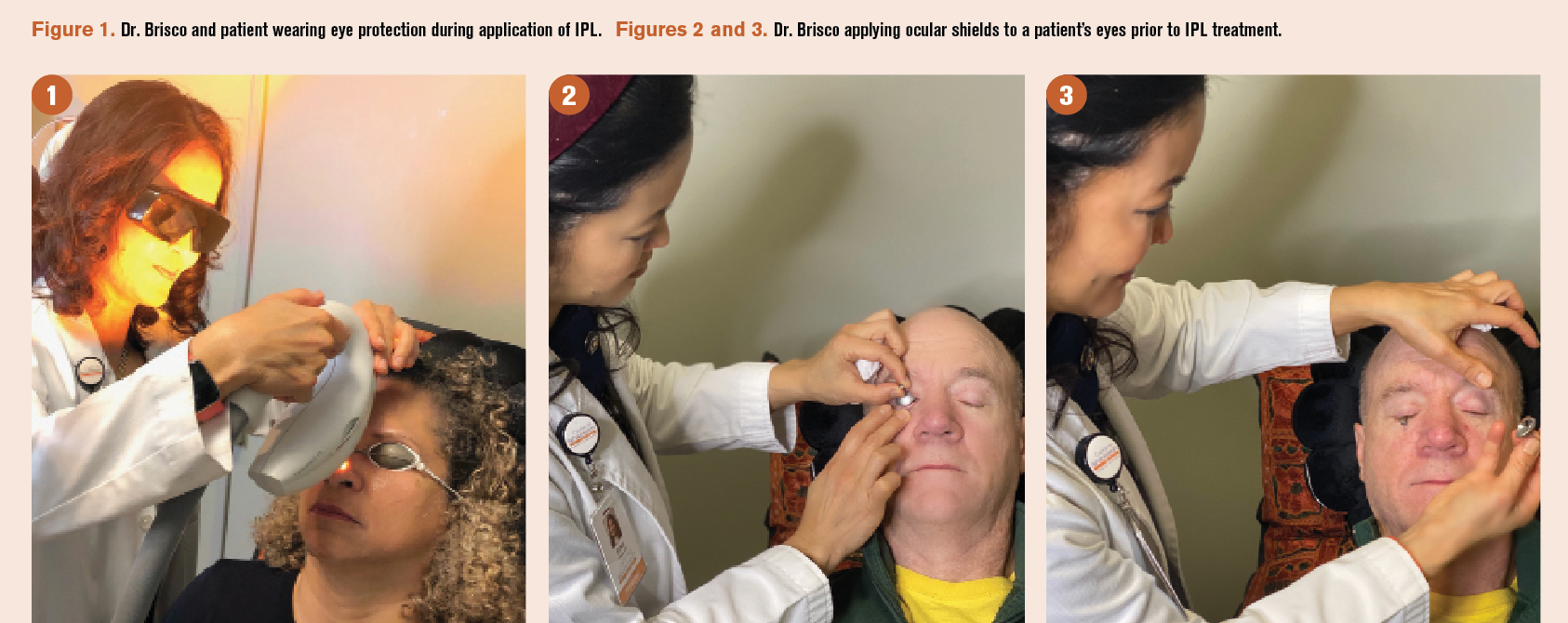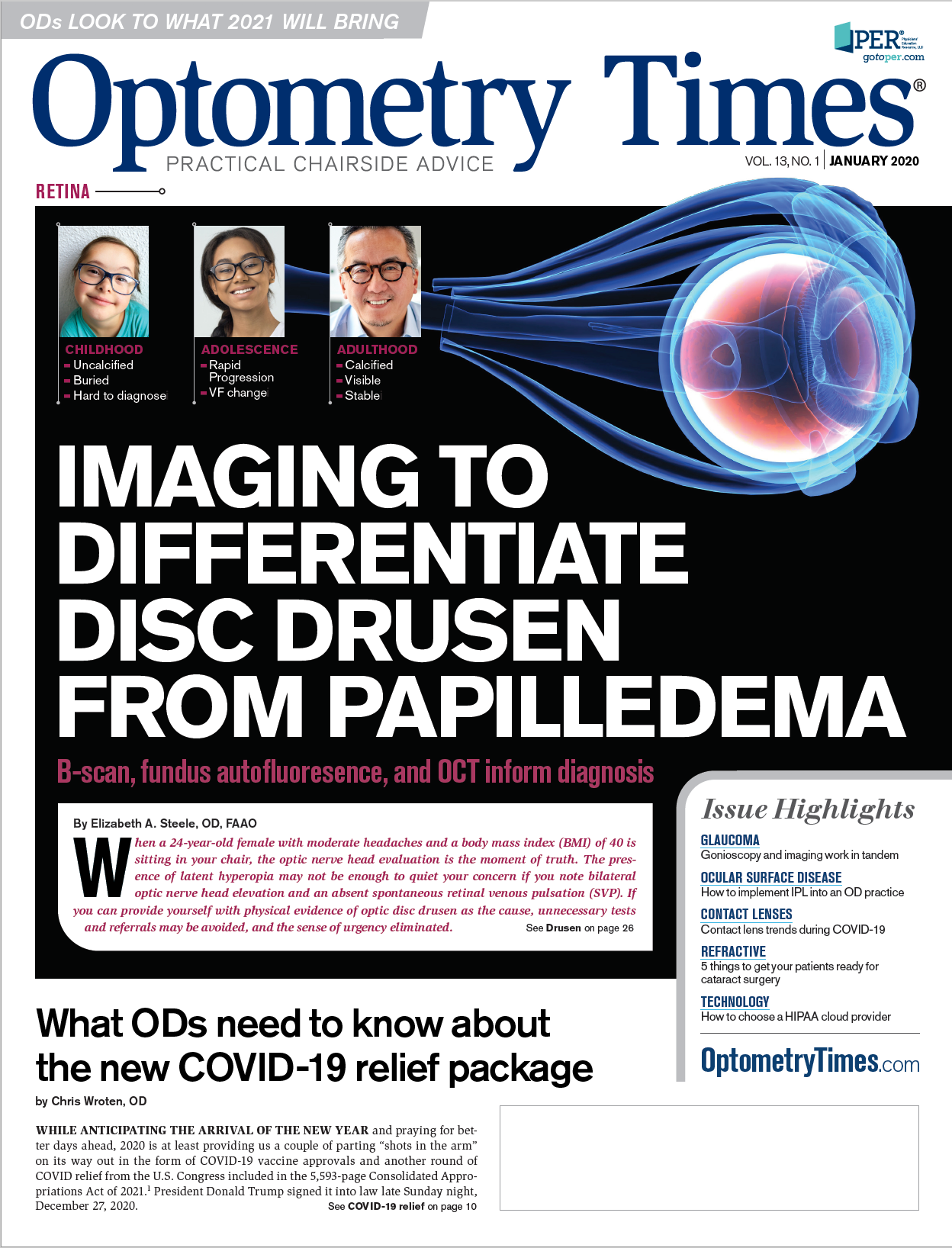How to implement IPL into an optometry practice
From choosing a system to picking candidates, the process exceeded expectations


Over the years, I have developed a state-of-the-art holistic dry eye clinic where I use an array of diagnostic modalities and treatment options to develop effective, individualized treatment plans. Many patients have benefited from thermal massage, exfoliation of scurf and demodex, nutraceutical supplements, and homeopathic medicine for stress, which exacerbates dry eye disease.The missing essential element was a way to address the inflammatory component.
In the last few years, I read more and more about ocular rosacea, inflammation, and the growing movement toward treating dry eye with intense pulsed light (IPL) therapy. I was interested in adding IPL to my clinic, but I still had questions. I checked with my state board, which confirmed it is permitted in my state (CA) because ODs can treat for the indication of inflammation related to dry eye.
I began the process of implementing IPL in my practice, starting with an in-depth trial of two different systems.
Trialing IPL systems
I wanted to trial IPL systems in my practice so I could determine which one I would purchase and get an idea if my patients would be willing to pay out of pocket for this procedure. If patients were reluctant, the return on investment (ROI) would not justify the purchase.
Two manufacturers loaned me their devices for 1 month and answered all my questions. Both systems had minimal space considerations, and IPL can be performed in an exam room, so I didn’t have to shuffle things around to create an IPL treatment area. Because IPL is a cash procedure, there was no complex billing implementation.
After 1 month, I chose Optima IPL (Lumenis) because I think it offers more features and presets and the ability to treat the upper and lower lids as well as larger tragus-to-tragus area. I am able to better target the treatment area with the 2 different Sapphire tips that allow me to reach the upper lids and around the nose. Patients whom I had treated with both systems remarked that they felt the Optima IPL a bit less because of the cooling tip.
Within the first month, I was getting amazing results with dry eye patients whom I had treated with everything from thermal massage to nutraceuticals and anti-inflammatory medications. Patients were remarking after only 1 IPL treatment that they felt so much relief. Patients reported less tearing, less crusting on lids, and better-looking eyes.
I was thrilled to find the “missing link” in my protocol for treating dry eye, plus I was pleasantly surprised that we received little resistance to the treatment and out-of-pocket payment. The key is education. I educated my patients that clogged meibomian glands led to inflammation that needed to be treated to allow a healthy environment to produce healthy tears. Once I selected candidates and explained the procedure, only about 1 in 100 declined the treatment.
Candidates and positioning
Among patients with dry eye disease, many people benefit from having IPL. IPL is not recommended for people with certain medical conditions such as epilepsy or keloid scarring. IPL is also not used when patients are taking medications that cause photosensitivity such as antibiotics (doxycycline, tetracycline), chemotherapy, or steroids like prednisone. Most patients who receive IPL have a Fitzpatrick skin type of 3 or lower, all though type 4 can be treated with an adjusted energy level and type 5 can receive an adjusted protocol. Those limitations aside, we begin assessing a patient’s candidacy with the history, then learn more from examination and diagnostic testing.
As part of our history, we ask patients how their eyes feel at the end of the day. A lot of people don’t know there is treatment for red, tired eyes—they just think that’s the way it is when you use computers or wear contact lenses. During the exam we perform lid expression to see if the meibomian glands are releasing a quality lipid layer to lubricate, nourish, and prevent tear evaporation. If we note thick, unhealthy expressions and obstructed glands, then we tell the patient we need to image the glands and treat their meibomian gland dysfunction (MGD).
Using Meibox (Box Medical Solutions), we image the glands to see where there is damage, loss of glands, and obstructions. This is a progressive disease, so this baseline image is an important way to track diminishing obstructions and improving glands, optimally without losing more to atrophy.
We explain to patients that we can open their tear glands with thermal massage, but we also need to treat the inflammation. The glands are unhealthy after being plugged for a prolonged period, and the telangiectatic vessels, which patients can see on imaging, continue to feed and perpetuate the inflammation.
It is ODs’ responsibility to present the best treatment options without assuming what patients can or will pay. Our office offers a financing program.
Day-to-day results
IPL is delivered as a series of 4 treatments, spaced 2 weeks apart. Sessions are scheduled in the same time slots as routine exams—no longer visits or block scheduling required. We create a spa-like environment so patients feel calm and confident.
We typically see results after 2 sessions, and patients experience lessening of their symptoms after the full series. It is common to see patients with severe symptoms and significant gland dropout who found relief from thermal massage, nutraceuticals, medication, and lid hygiene. However, in my experience not until IPL do they feel and look comfortable again. IPL marries health with beauty because patients no longer look in the mirror and see red, puffy or crusty eyes. Patients often get emotional about the change in both comfort and confidence.
IPL is providing the missing link for my patients. We were removing the oil and bacteria clogging the meibomian glands, but treating inflammation with IPL has completed the therapy. In addition to clinical rewards, it has been professionally and intellectually rewarding to see our patients happy.
ROI and expansion
With such a high acceptance rate, our practice has seen an excellent ROI with IPL. Marketing has been minimal—just a few social media posts—but we have succeeded by treating our own patient base and seeing that base expand by word of mouth.
I thought it would require about 2 years to recoup the cost of the system, but it took only took 9 months. We average at least 3 IPL treatments a day, many for new clients, and practice revenues have increased by about 40 percent. As we move into 2021 in an environment of public health restrictions, reopenings, and patients reluctant to visit their doctors, the high-demand, high-return, high-satisfaction nature of IPL will play a pivotal role in bolstering our revenue stream.
IPL has grown the practice’s reputation through articles, podcasts, and social media. People fly to Los Angeles to see us for IPL. Clearly, not enough ODs are performing IPL to meet the demand of patients with dry eye disease. It’s a great opportunity for ODs to shine as primary caregivers, and to ensure our practices thrive.

Newsletter
Want more insights like this? Subscribe to Optometry Times and get clinical pearls and practice tips delivered straight to your inbox.